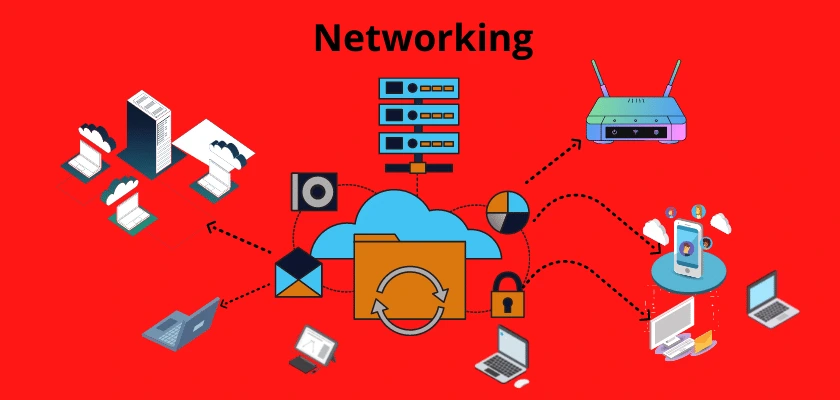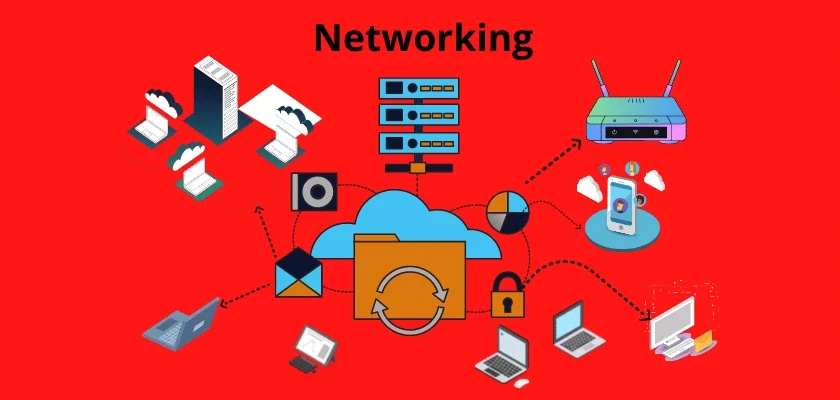
If you own a business, you must surely be aware of how good IT systems are and why they are essential for the performance and functionality of your company. Networking is just a collection of computers that are linked together. It enables the devices in the network exchange resources and information. A network can be established to function in several different ways which we will see in this article.
Networking is what enables machines communicate with each another effectively. New technological networking advances are quite apparent. Previously, computer networks consisted of a collection of comparable desktop interconnected computers by a tangle of wires. Computer networking has become much more adaptable in recent years.
Cordless systems of connectivity are now part and parcel of network systems. It implies that various pieces of hardware in a networked environment can be moved around conveniently. An iPad or notebook, for instance, is something you might have to carry with you to workstations and conferences.
Anyway, this is just a glimpse of what we’re about to cover in this article. Our ultimate guide to networking will provide you with every bit of information you are looking for. From the basics to how networking is evolving, let’s get started!
What is Networking?
Networking is a collection of computers and devices that are designed to operate together. Networks, also referred to as data channels, consist of a series of networks interconnected by communication channels. Information is accessed, sent, and transferred to endpoints via nodes or computers.
How do you connect two or more devices? Computers or network devices are connected through wireless radio waves and Ethernet cables. To transfer data among predefined terminals, this combination of technologies uses established algorithms. Computer networking allows for more efficient communication, collaboration, and sharing of resources.
Types of Networking
Computer networks come in a variety of shapes and sizes. The key distinction is in the geographical regions they cover and the functions they are capable of performing. All these and more are discussed below;
(1) Local Area Networking (LAN)
LANs are usually restricted to a single location such as an office. A LAN is a network that spans a limited location. It enables the sharing of resources such as printers, scanners, storage systems, and much more.
(2) Wide Area Networking (WAN)
A WAN network spans a wider geographic region than that of a Local Area Network. A country or even continents are connected via a Wide Area Network. Connection types such as fibre optics and satellites are used to connect devices in a WAN. WANs are composed of smaller networked systems of Metropolitan Area Networks and Local Area Networks.
(3) Metropolitan Area Networking (MAN)
MAN has a far broader coverage area than LAN. A Metropolitan Area Network comprises a network of devices that span over an entirely different city or university. A MAN can link a small geographical location or span many miles, based on the connectivity medium. A MAN also referred to as a Campus Area Network (CAN), is a collection of LANs joined together to form a larger network.
(4) Home Area Network (HAN)
A Home Area Network (HAN) is a type of network that functions in a residence. HAN refers to an IP-based network that could be wireless or wired. It is a multi-user network that comprises shared equipment such as fax machines, scanners, printers and storage systems.
(5) Personal Area Networks (PAN)
Personal Area Networks (PANs) are a type of networking technology which serves a single individual. PAN is an excellent solution for connecting personal devices like mobile phones, laptops, game consoles and other peripheral devices for the convenience of an individual.
(6) Multiprotocol Label Switching (MPLS)
This is a network connection strengthening method. It is designed to optimize the flow of packets from one network to another until they arrive at their destination. It transmits packets along specified network pathways. In a perfect world, routers would spend much less time selecting where to send every packet and packets would always follow the same channel.
Consider how you’d go about organizing a long trip. Rather than figuring out which cities and towns one needs to pass through to get to their destination, it’s typically more effective to figure out which highways lead in the right direction.
How does Computer Networking Function?
Networking systems function using sophisticated equipment such as switches, routers, access points, firewall and so on.
A switch is a networking device that connects PCs, printers, servers and other equipment to form a network. These devices communicate in this network by sending packets which a switch receives and forwards to the appropriate nodes accordingly.
A router is a networking device used to move packets from one network to another. They review information delivered over a network, determine its optimal routes and then dispatch them.
Routers and switches have similarities but their major distinction is in how they recognize devices. A switch identifies a device using its MAC address (Media Access Control) while a router identifies a device using its MAC address and IP address. This IP address is assigned to a device by a DHCP server (Dynamic Host Configuration Protocol).
An access point is a networking device used for wireless connections. This device is designed to broadcast WIFI signals and connect wireless devices to a network.
A firewall is a defense system in a network used to provide security, filtering and scanning of all network traffic and responds based on configured policies.
The Benefits of Networking
The following are some of the most important benefits networking provides;
(1) Flexibility
The versatility of contemporary networking is what makes it so appealing. You may begin a document on your iPad while in a conference. Then you transfer the file to your official laptop and continue to work on it from where you left off. Furthermore, you can instantly disseminate information to your personnel, regardless of where they are.
(2) Utilizing a Centralized Database
There are several advantages to using a server-based consolidated networking configuration. Apart from the file-storage centralization, you can also use centralized information input and access. This implies you may construct a centralized registry that all your workers can access from any device in layman’s terms.
(3) Easy Manageability of Resources
Several software companies provide a networked version of their products. That implies you may buy a small license for these products and install on your central database. Single computers in the network can execute instances of the program without requiring a separate license to be installed.
(4) Interoperability
Years ago, starting a company network was a lot more rigorous. The network was limited to “compatible computers” and equipment. A professional IT service provider today can enable a network to function with various hardware and they operate together in a network.
This implies that different operating systems may be installed on various types of devices and they can all function effectively in a network.
(5) Enhanced Storage
In a networked environment, the way you save information evolves. With networking you can have several storage systems connected together to become a large central storage unit.
(6) Cost-effective Resource Sharing
Networking provides the ease of sharing of resources. For example, a central printer can be used by several people in an office. Staff members can work on documents that are kept in a shared folder as opposed to each individual working on documents and sending them individually. Networking also enables access to resources irrespective of geographical location.
Workers can exchange ideas and operate more effectively with the use of computer networking. It boosts their performance and enhances the profitability of a business.
How is Networking Evolving Today?
More than a mere connection is provided by today’s networking. Firms are starting on a digital transformation. Their networks are vital to their development and prosperity. The following are examples of network designs that are emerging to fulfil such demands:
- Multidomain Integrations – Bigger businesses can create different networking systems for their headquarters, WANs, and server farms, referred to as networking domains. Multidomain integrations, cross-network often which means essential operational parameters to guarantee that targeted business results across network domains are realized.
- Controller-based – Expanding and protecting networks require network controllers. Controllers simplify network operations by converting commercial purposes into device settings and continually monitoring devices to guarantee reliability and functionality. Controllers assist firms in reacting to shifting business needs by simplifying processes.
- Virtualized – Several “overlay” networks could be created by conceptually partitioning the underlying physical network architecture. Every one of these virtual systems may be customized to satisfy specific privacy, quality of service (QoS), and other needs.
- Intent-based – This is built on SDN concepts. It adds flexibility, and helps a system accomplish its goals by automating repetitive tasks. Evaluating performance, highlighting trouble spots, offering overall safety, and connecting with company operations.
- Software-defined – Network design is becoming increasingly customizable, automatic, and transparent in reaction to current demands in the “digital” age. The distribution of information in software-defined networking is managed centrally by software-based processes. It allows the network to adapt to changing situations more rapidly.
Conclusion
Networking and other quality technical solutions are an important factor in every organization’s growth. Computer networks are essential for business performance and overall productivity. Computer networking provides organizations and institutions with a plethora of technology solutions in several forms. The advantages of networking include low-cost installations and the most efficient use of existing resources. You’ll be able to simplify communications both inside and outside your business.
